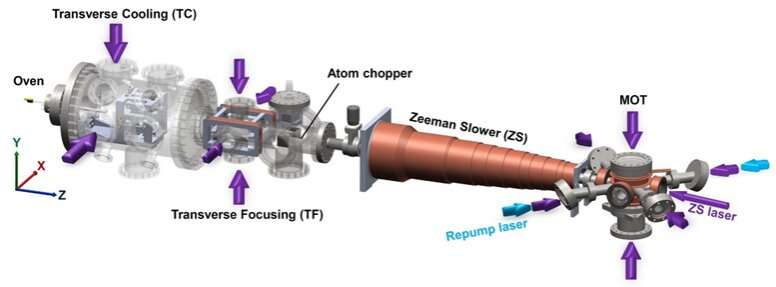This article has been reviewed according to Science X's editorial process and policies. Editors have highlighted the following attributes while ensuring the content's credibility:
fact-checked
peer-reviewed publication
proofread
Capturing a cosmogenic isotope to determine the age of artifacts

You may probably wonder how archaeologists determine the age of ancient artifacts or how long a piece of rock exists above the surface. Isotopic dating can tell the age covering hundreds of thousands of years. For instance, common carbon isotope 14C dating can determine the age of artifacts up to 50,000 years. Theoretically, the cosmogenic isotope 41Ca, with a half-life of 99,000 years (17 times that of 14C), can cover an age scale beyond the reach of 14C. Nevertheless, the distribution of 41Ca natural abundances spans the range of 10-15 to 10-16, below the limitation of the present accelerator mass spectrometry (AMS) method.
Now, the detection limitation of 41Ca has been broken by a research team led by Prof. Lu Zhengtian and Dr. Xia Tian from the University of Science and Technology of China (USTC). The researchers realized the single-atom detection of 41Ca at the 10-17 level using the atom-trap trace analysis (ATTA) method and performed demonstration analyses on bone, rock, and seawater samples. The results were published in Nature Physics on March 2.
In this study, the researchers first chemically extracted 80 mg of metallic calcium samples from bones, granite, and seawater. The calcium was then loaded into an oven and heated to produce a neutral atomic beam. The atoms were transversely cooled and focused with laser beams. Then they were decelerated in a Zeeman slower and captured into a magneto-optical trap (MOT).
Through these operations, the researchers counted the 41Ca atoms one by one by measuring their fluorescence. Lu's team realized a precision of 12% on the 41Ca/Ca ratio at the level of 10-16 and achieved a detection limit at the level of 10-17, which is below the distribution of natural abundances.
These results ensured the feasibility of potential applications, such as the burial dating of bones and exposure dating of rocks. Next, the researchers will collaborate with worldwide archaeologists and geologists to explore the suitability of 41Ca as a tracer.
More information: T.-Y. Xia et al, Atom-trap trace analysis of 41Ca/Ca down to the 10–17 level, Nature Physics (2023). DOI: 10.1038/s41567-023-01969-w
Journal information: Nature Physics
Provided by University of Science and Technology of China





















